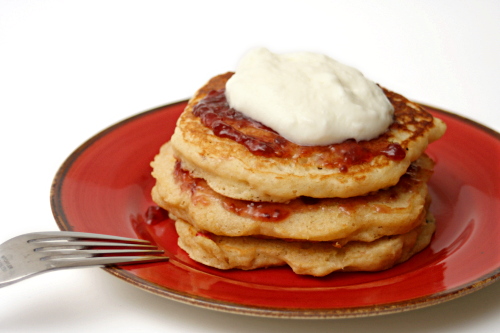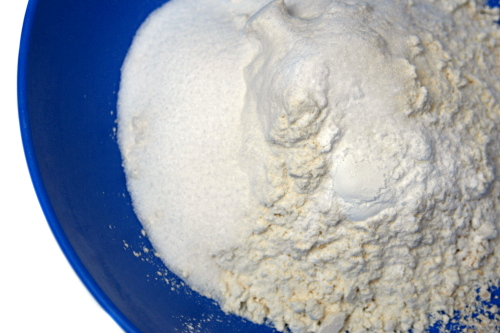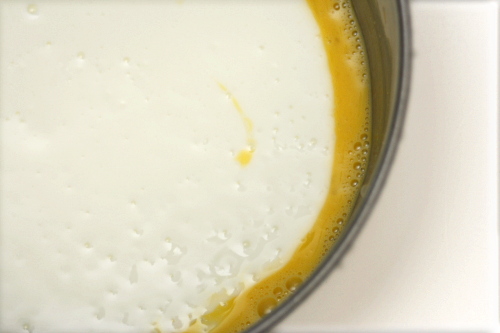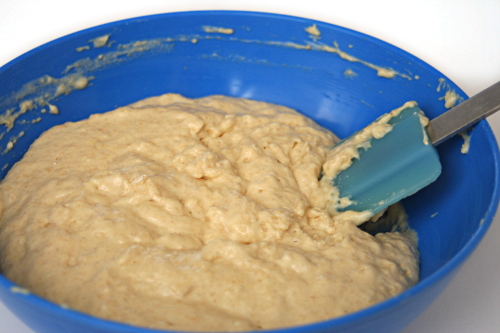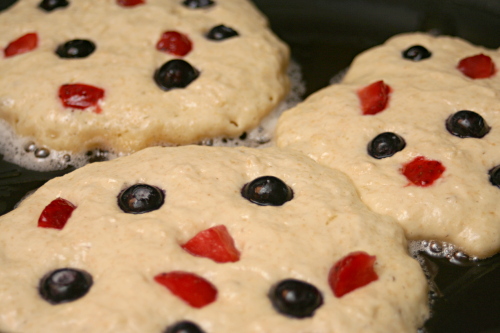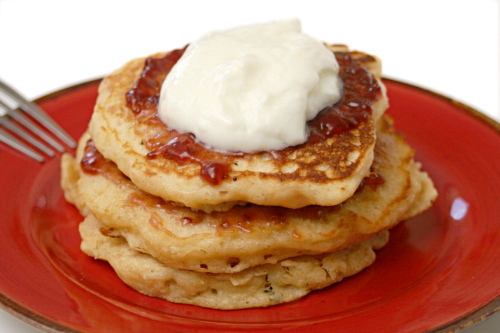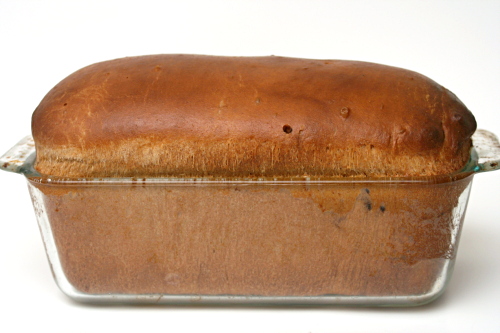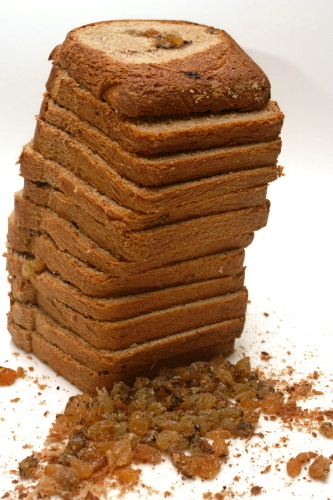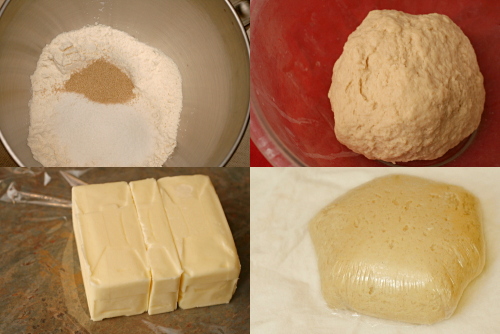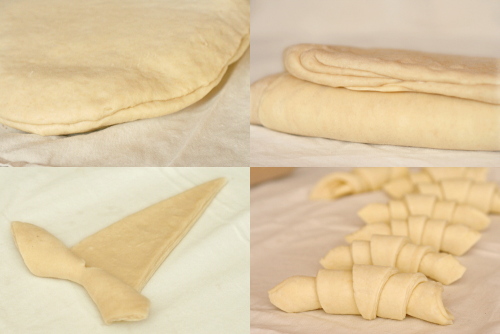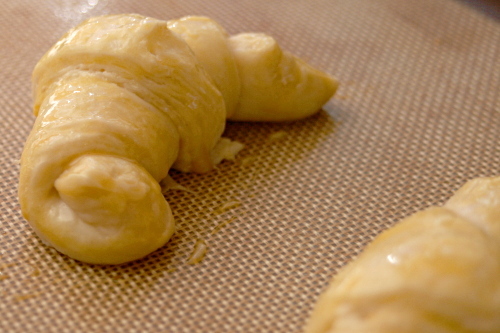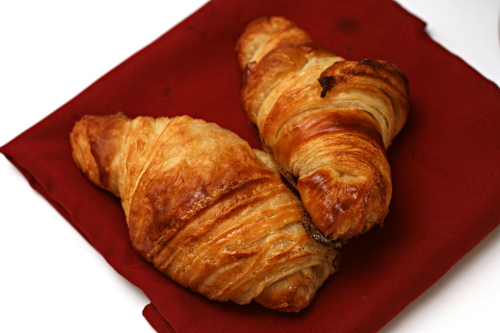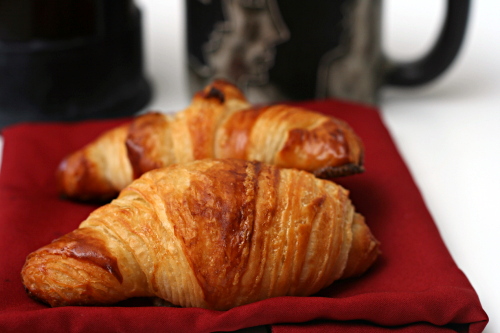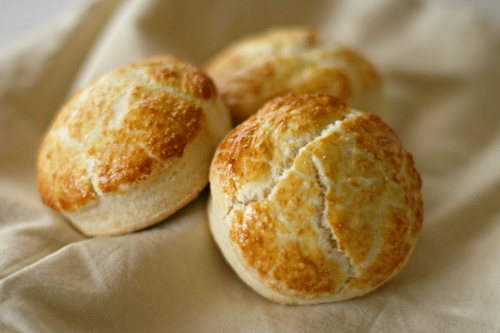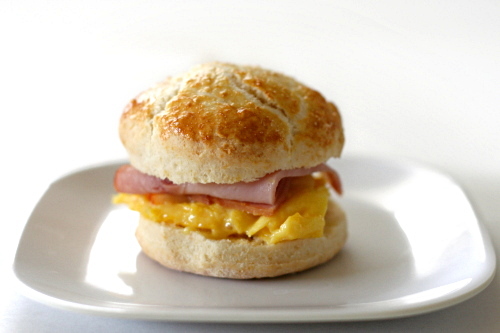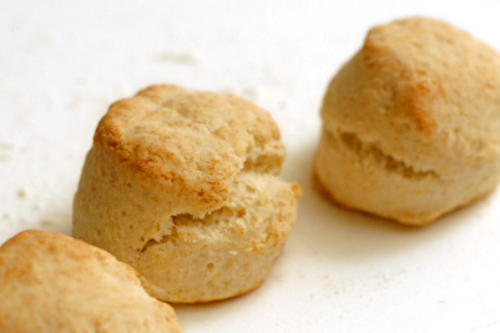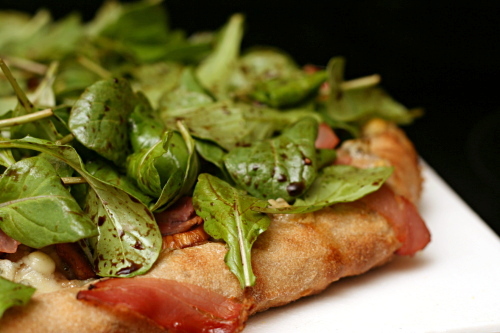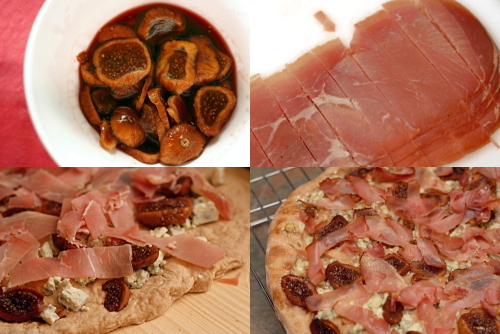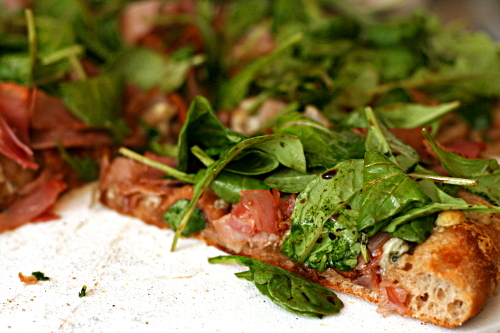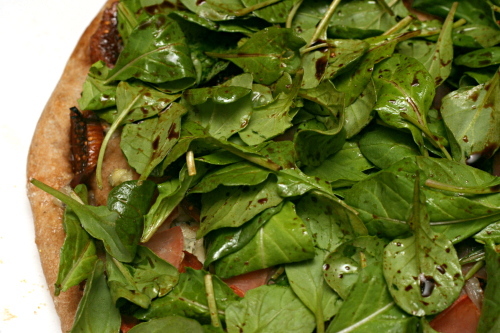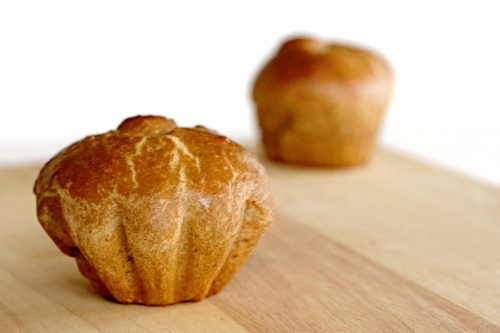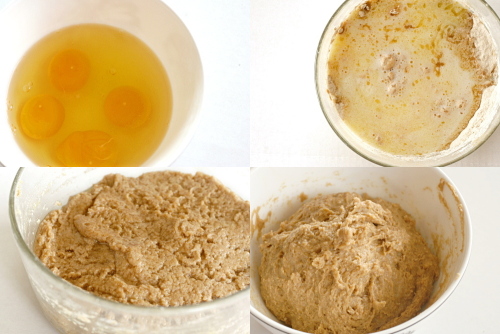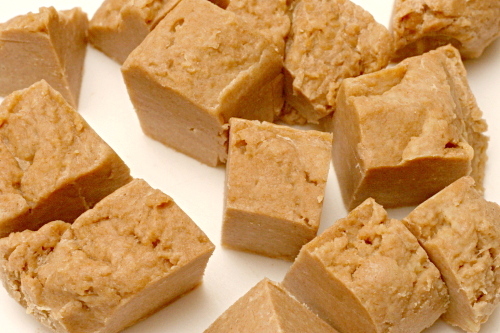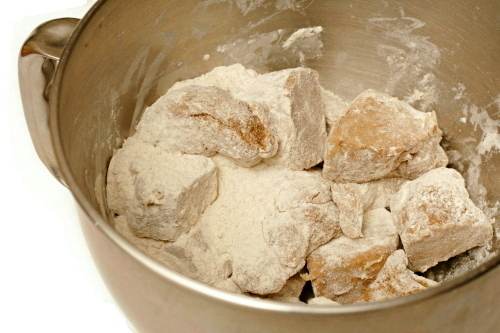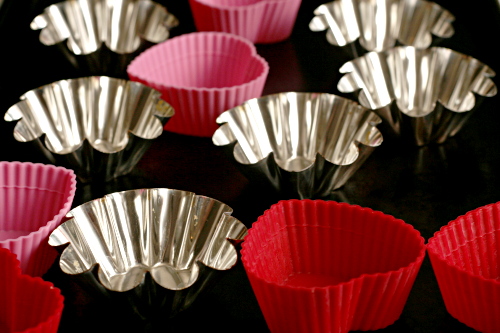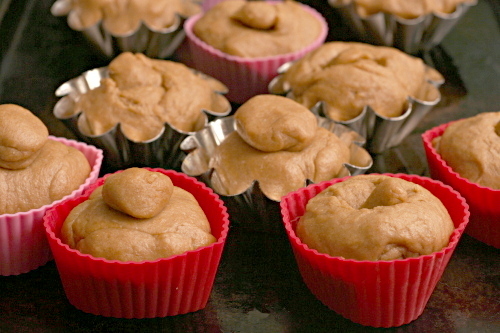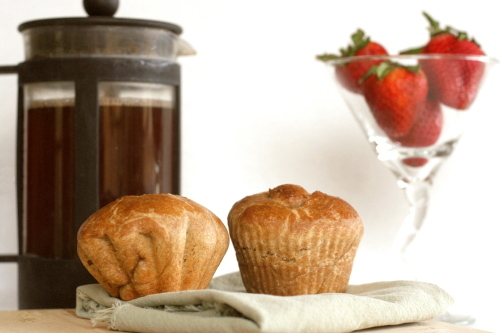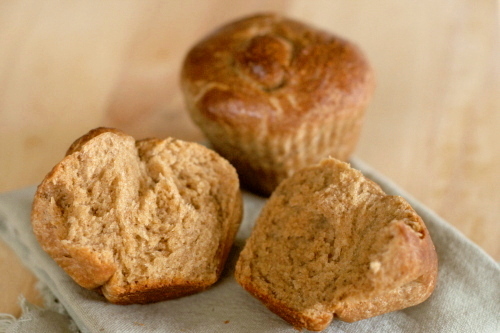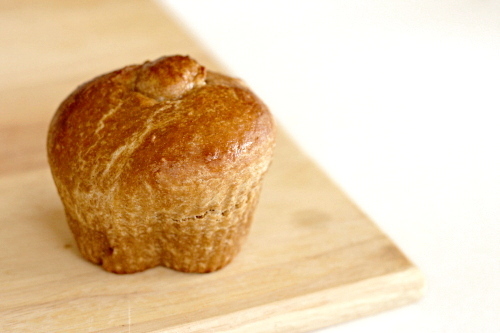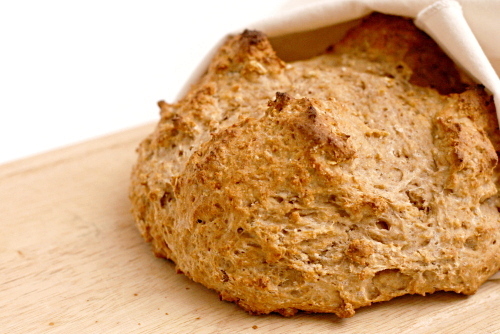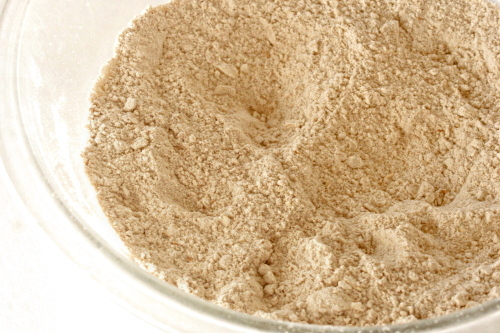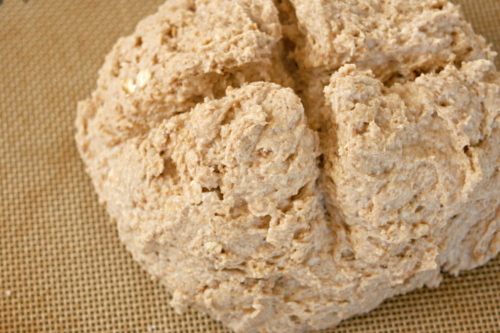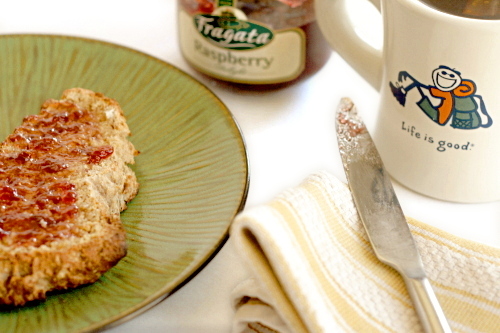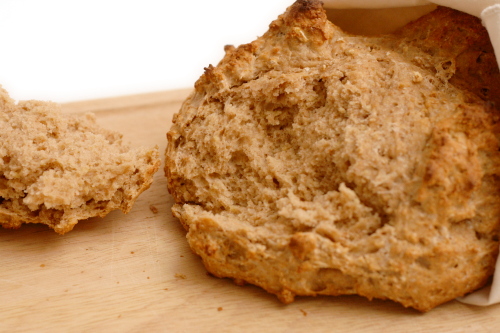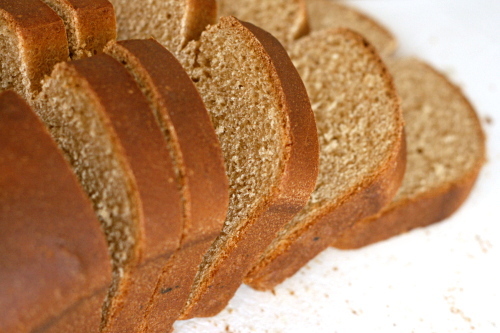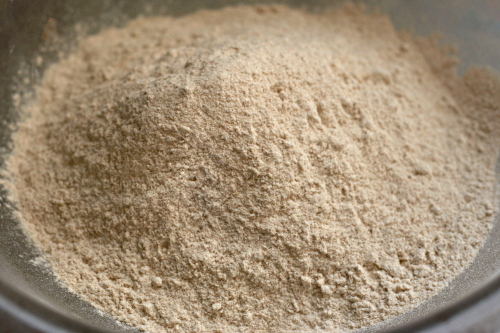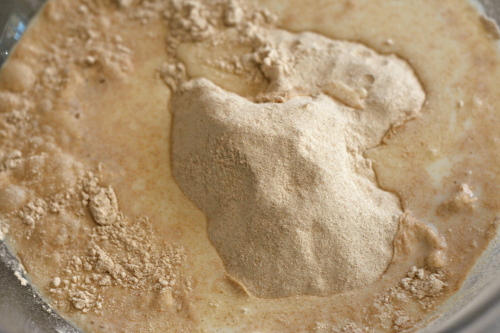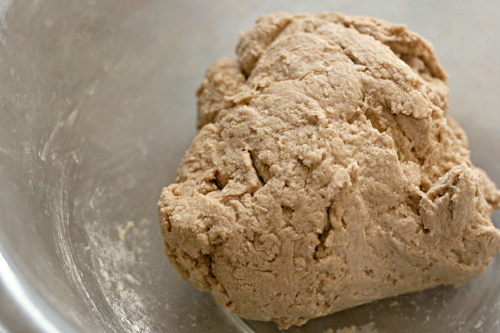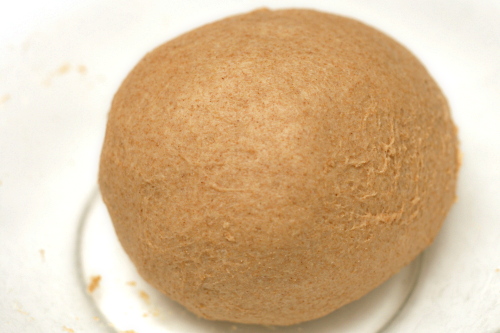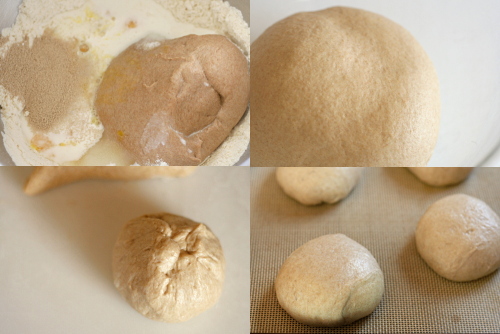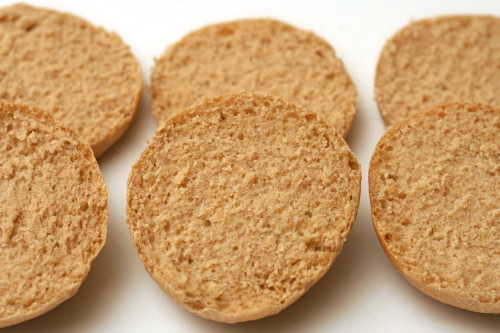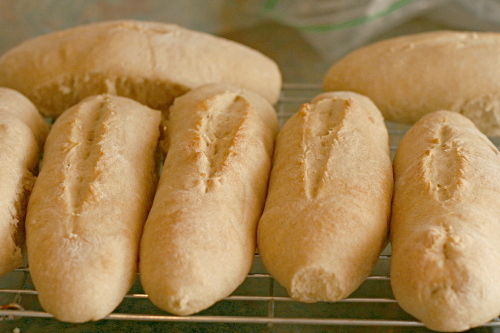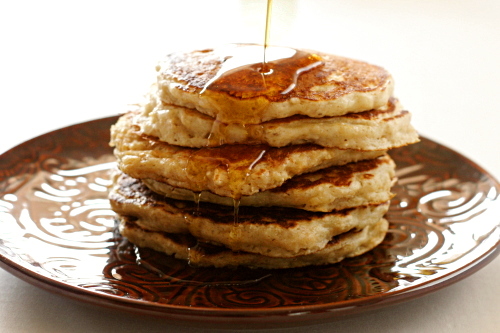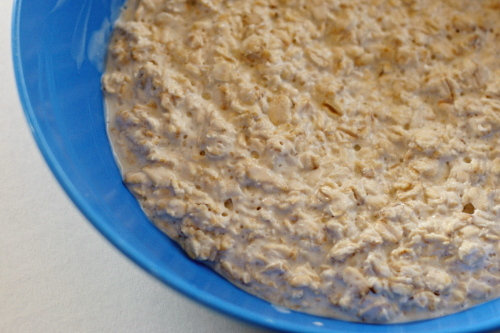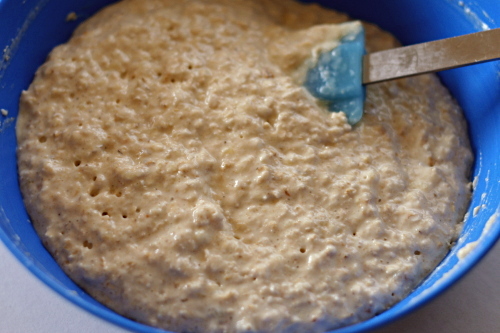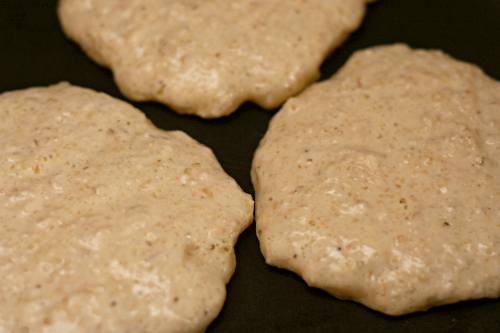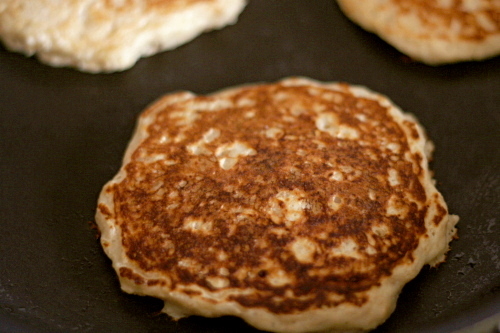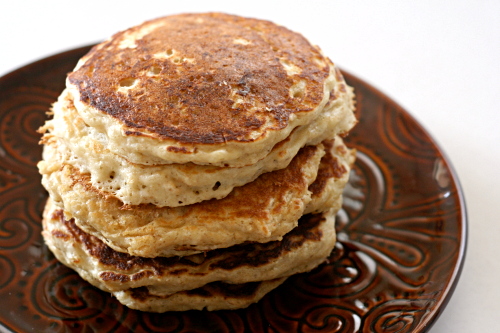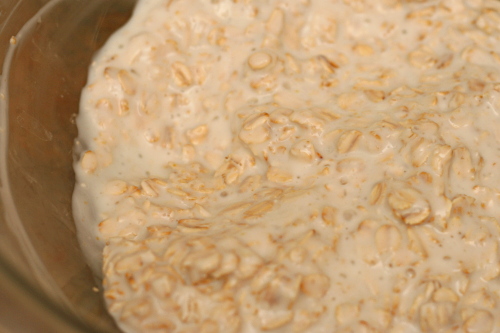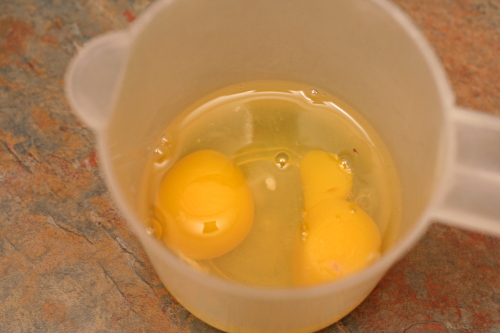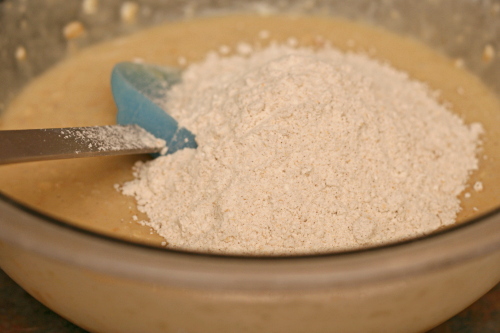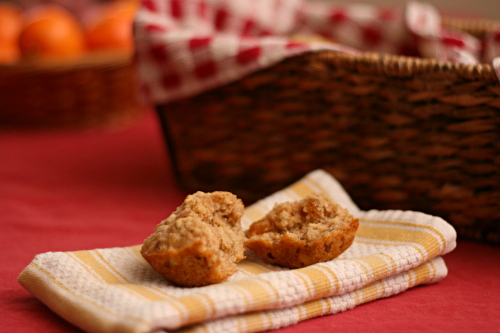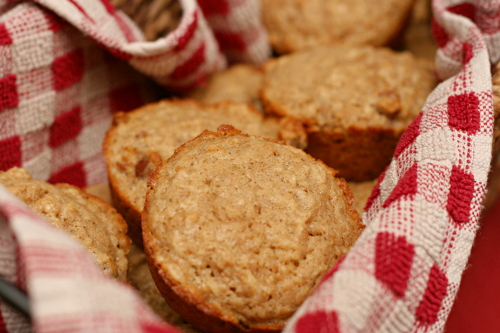Every time I want to make pancakes, I have to look up my pumpkin pancake recipe and mentally subtract out the pumpkin and fall spices. It’s about time I made my basic pancake recipe more accessible.
The thing about pancakes is that there are a lot of less-than-perfect recipes. Trust me, I’ve tried a lot of them. I suppose what’s less-than-perfect for me might be perfect for someone else. Maybe. Because if a pancake is not too thin and not too thick, not too sweet and not too bland, plus not too hard to make and not too bad for you, what else could you want?
Did you want adaptability? You can have that too. Add fruit or nuts. Replace the sugar with honey. Replace half (maybe more!) of the flour with whole wheat pastry flour.
Did you want to use something other than buttermilk? I’m becoming a fan of actual buttermilk (or what passes for it in the grocery store today, which is not actually the “milk” leftover after churning cream into butter, but something more similar to yogurt – whatever, I like it). I love having it around. It lasts a while in the fridge and gives me an excuse to make pancakes, waffles, biscuits, coleslaw, cake. If you instead want to do the milk+lemon juice trick, only use ¾ cup of milk along with a tablespoon of lemon juice. If you’re using powdered buttermilk, only use 7 (liquid) ounces of water instead of the cup it recommends. If you have both plain yogurt and milk around, mixing the two together is my favorite buttermilk substitute.
You can top your pancakes with whatever you want too, which probably means syrup. But, consider something different – maybe jam and plain yogurt? It’s healthier, but more important, it tastes great, with a nice balance of sweet and tart, hot (if you heat the jam first) and cool. Or just use syrup. However you prefer your perfect pancakes is fine by me.
One year ago: Brioche
Two years ago: Salad with Herbed Baked Goat Cheese
Printer Friendly Recipe
Basic Pancakes
Serves 2
There are all kinds of ways to play with this recipe – chunks of fruit or chocolate or nuts, spices, whole wheat pastry flour. The recipe is your oyster. You can even get away with using only 1 tablespoon of butter.
See the blog entry for notes on buttermilk substitutions.
1 cup (5 ounces) flour
1 tablespoon sugar
1 teaspoon baking powder
½ teaspoon baking soda
½ teaspoon salt
1 egg
2 tablespoons butter, melted and cooled
1 cup buttermilk
vegetable oil for the pan
1. In a large mixing bowl, stir together the flour, sugar, baking powder, baking soda, and salt. In a separate mixing bowl, whisk the egg until thoroughly combined, then add the butter and buttermilk. Pour the liquid ingredients into the dry ingredients and whisk gently until batter is mostly mixed but still contains small lumps. Let the batter rest while the pan heats, at least 5 minutes.
2. Heat a non-stick skillet or a griddle over medium heat. Add a few drops of oil and spread it over the bottom of the pan. Using a ¼ cup measure, pour the pancake batter onto the hot griddle. When the pancakes are golden brown, after about 2-3 minutes, flip to cook the other side another 2-3 minutes. Keep warm in oven heated to 200 degrees.
